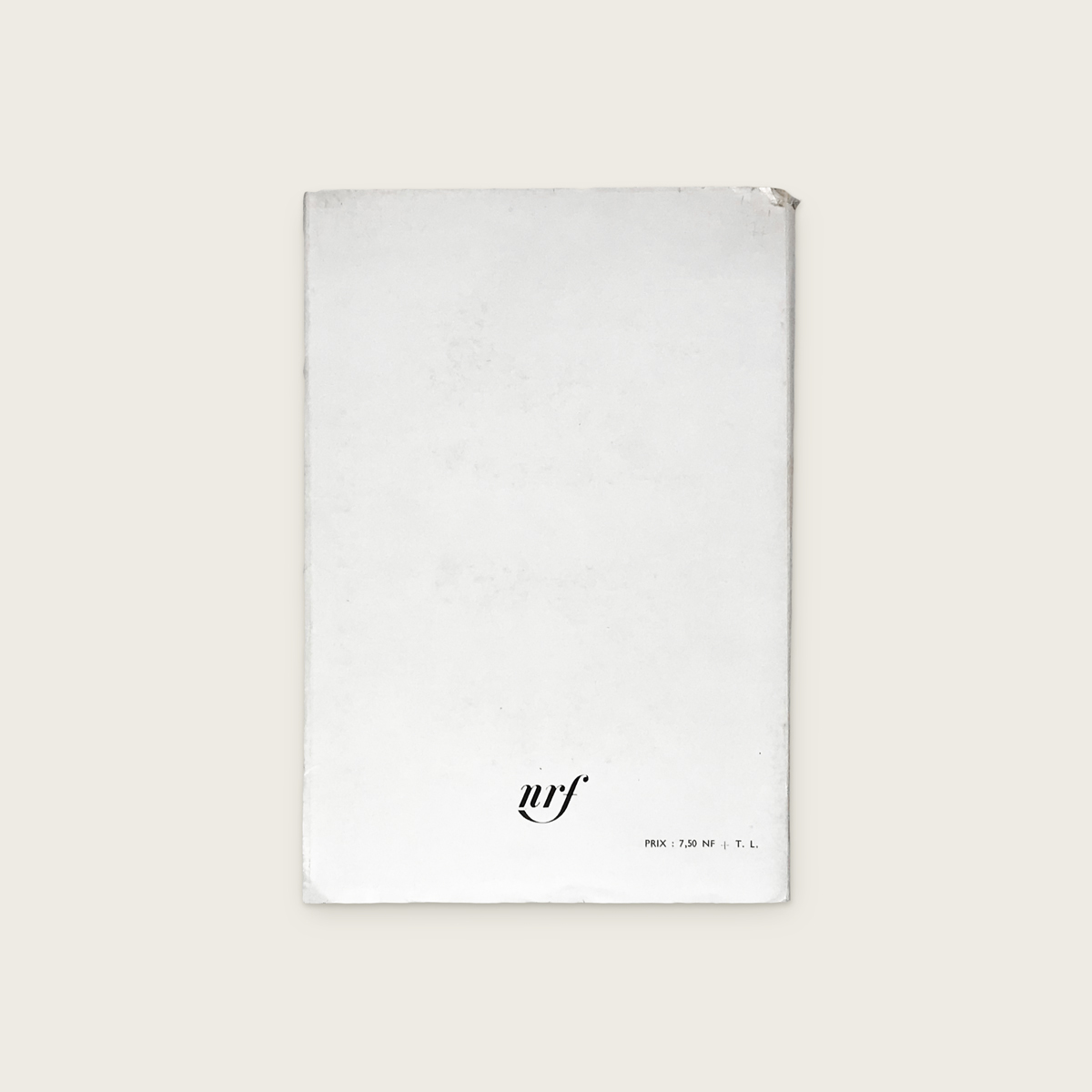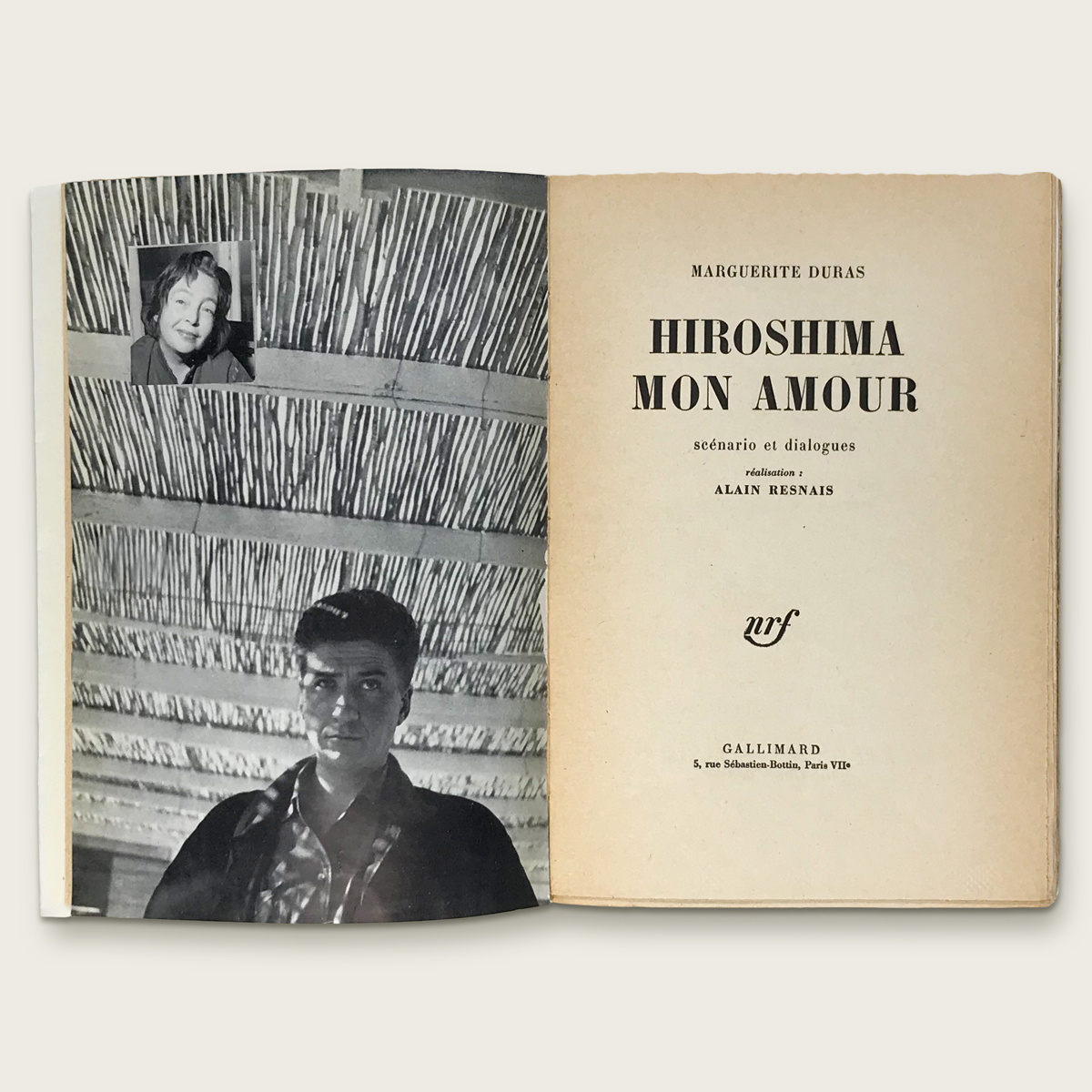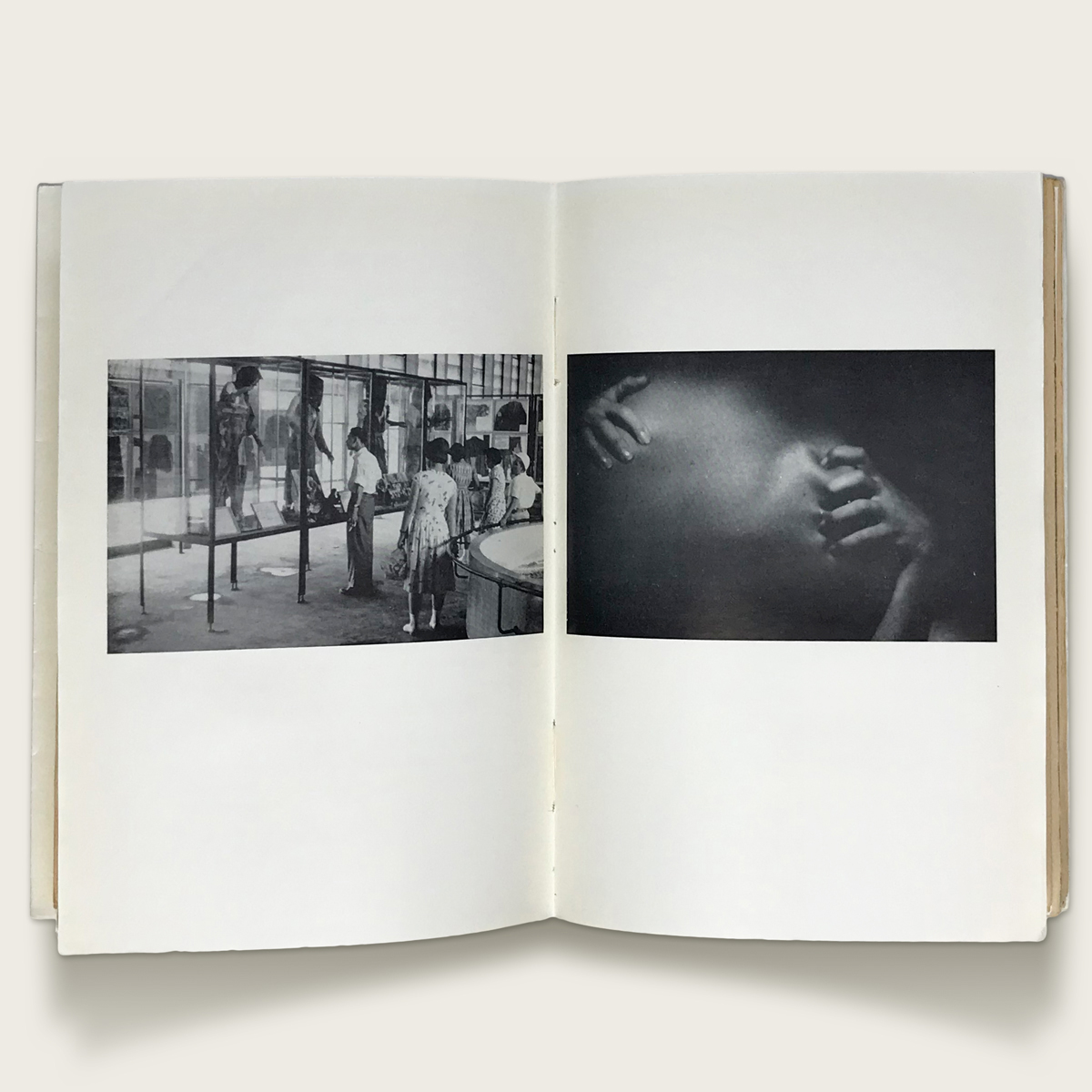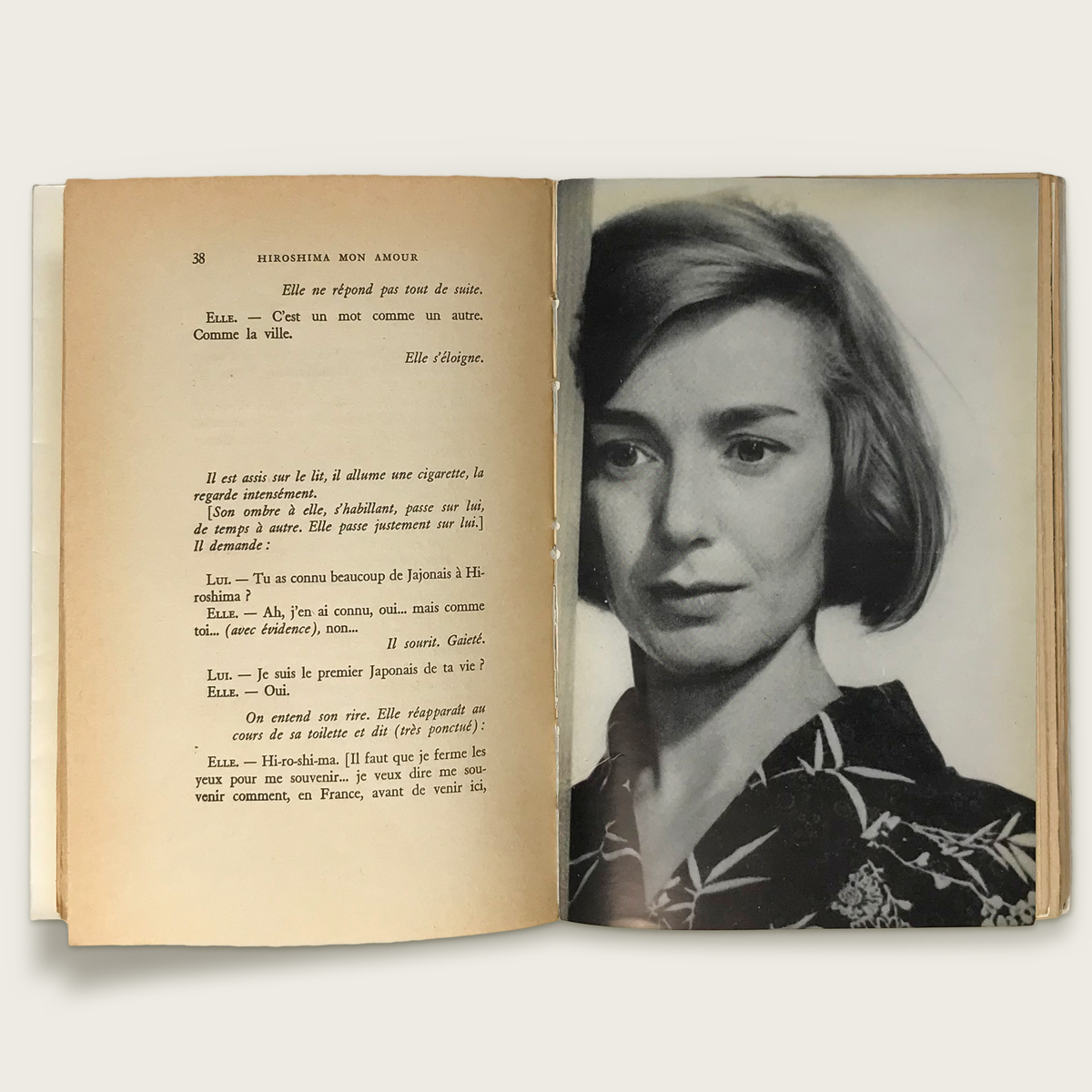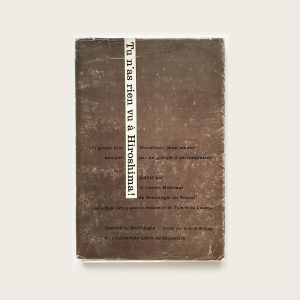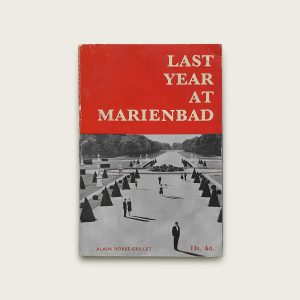Hiroshima, mon amour
By Marguerite Duras [Directed by Alain Resnais]
Paris: Éditions Gallimard, 1960. First edition. 12mo (20,5x14cm), card wrappers in illustrated dust jacket and rough-trimmed leaves. 180pp. Text in French. Dust jacket with small tears and chips to spine-ends. Pages slightly toned at margins, with occasional mild creasing. Content clean and unmarked. Near fine in very good dust jacket.
Argos Films had already produced Alain Resnais‘ Night and Fog, and Chris Marker’s Letter from Siberia, when they approached Resnais again and asked him to make a short film that would address the horrors of the atomic bomb.
Resnais started working with Chris Marker on the project, but Marker dropped out after ten days, not being able to figure out a way to make this film work, yet he recommended Resnais to work with a friend of his, but the friend also left the project after a few months.
Resnais came to the point in which he realized, that in the moment he would show something very real on the screen, the horror of it would disappear, therefore he needed to use every means possible to set the viewers’ imagination in motion, only suggesting the horror on the screen.
The producers of Argos Films suggested Resnais to work with other writers, and since he had just had read Moderato Cantabile by Marguerite Duras and admired her work, a meeting between Resnais and Duras was arranged. Marguerite Duras called Resnais days after the first meeting to come over and listen to a conversation she recorded between a French woman and a Japanese man in a restaurant, in which the French woman didn’t want to eat raw fish, out of fear it might had been irradiated.
This conversation was the starting point of the movie and the incredible collaboration between Duaras and Resnais. Resnais once noted, that Duras gave him the Libretto to which he set the images. Hiroshima, Mon Amour was published by Éditions Gallimard in 1960, and contains the entire script of the film with an additional introduction to the work by Marguerite Duras with further writings, such as short character studies in the chapters Portait du Japonais and Portrait de la Francaise.

